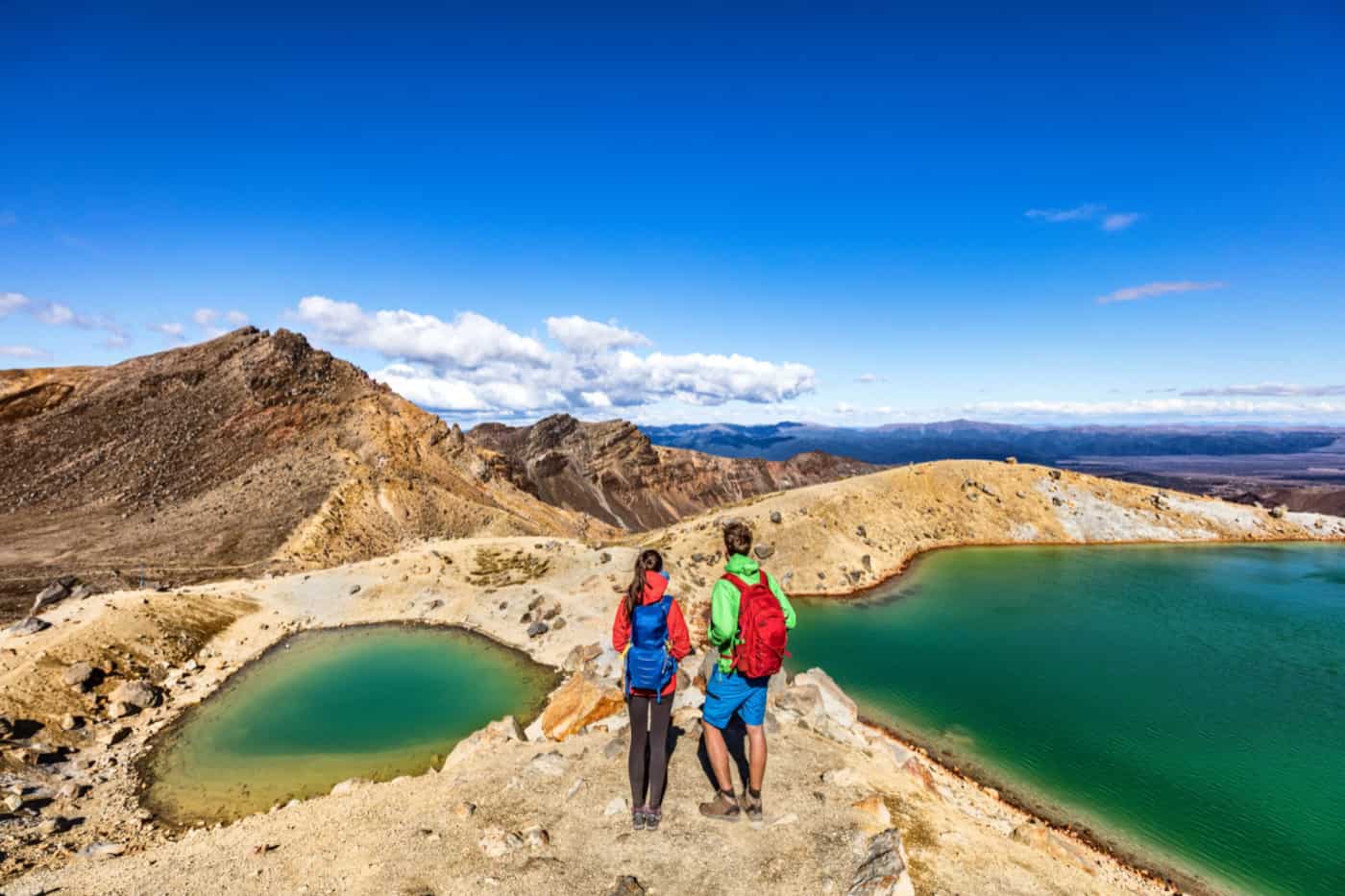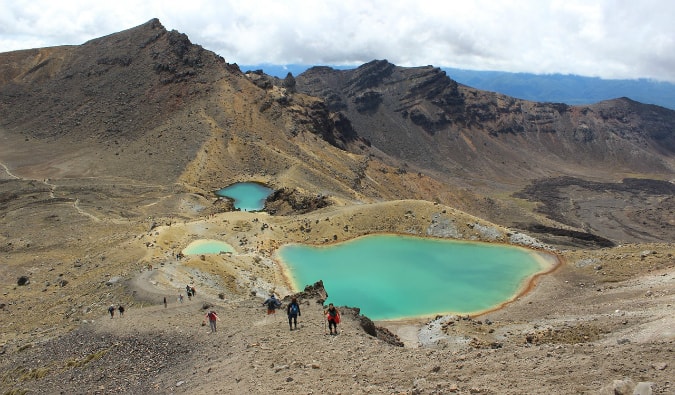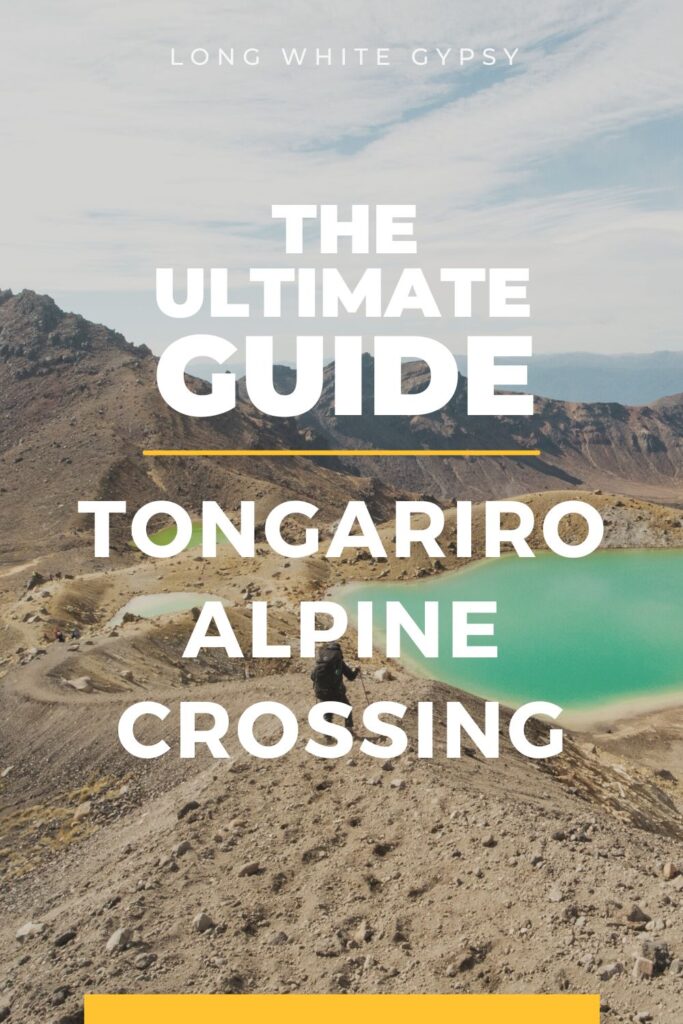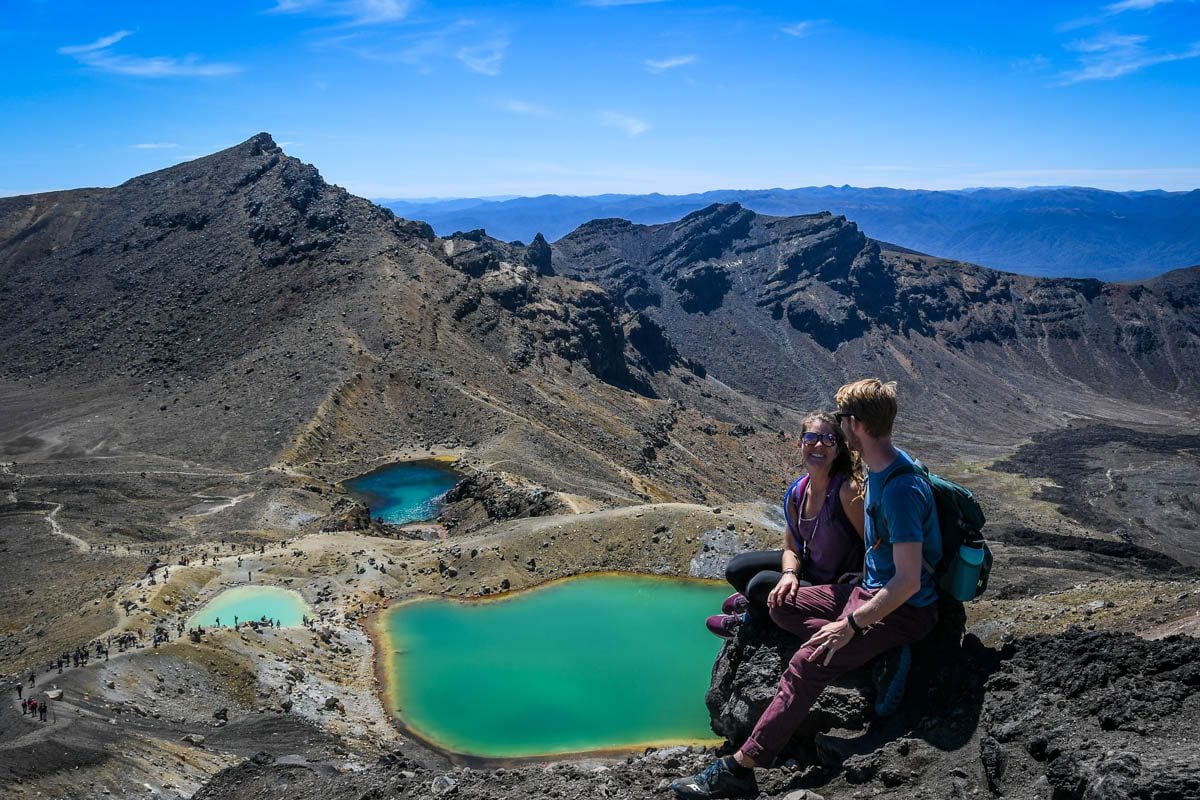If you’re an adventure seeker looking to conquer the beautiful landscapes of New Zealand’s Tongariro Crossing, look no further. This ultimate guide has got you covered with all the information you need for an unforgettable hiking experience. This guide is tailored to meet your needs. So lace up your boots, grab your backpack, and get ready to embark on an epic journey through stunning volcanic terrain.

Understanding Tongariro Crossing
The Tongariro Crossing is a world-renowned hiking trail located in the Tongariro National Park in New Zealand. This 19.4-kilometer trek takes you through diverse landscapes, including volcanic terrain, alpine meadows, emerald lakes, and stunning panoramic views.
Location and history
The Tongariro Crossing is situated in the heart of the North Island of New Zealand. It is surrounded by three active volcanoes: Tongariro, Ngauruhoe, and Ruapehu. This volcanic region is not only of great geological significance but also holds cultural importance for the indigenous Maori people.
The trail has a fascinating history that dates back thousands of years. It was once a path used by Maori tribes for trade and tribal warfare. Today, it is recognized as a Dual World Heritage Area by UNESCO, acknowledging both its natural and cultural significance.
Climate and best time to hike
The climate in the Tongariro National Park can be unpredictable, as it is subject to rapid weather changes. It is important to be prepared for various conditions, including strong winds, rain, and even snow. The best time to hike the Tongariro Crossing is during the New Zealand summer (December to February) when the weather is generally more favorable and the trail is less likely to be covered in snow.
Planning Your Hike
Before embarking on the Tongariro Crossing, it is essential to plan and prepare for your hike to ensure a safe and enjoyable experience.
Choosing the right time and date
Selecting the right time and date for your hike is crucial. Consider factors such as weather forecast, trail conditions, and the level of experience you have. It is advisable to check the Tongariro National Park weather forecast and consult with local authorities or experienced hikers for up-to-date information.
Study the trail map
Familiarize yourself with the trail map to get a clear understanding of the route and the different sections of the Tongariro Crossing. The map will help you plan your breaks, estimate hiking times, and identify key landmarks along the way.
Understanding the hiking difficulty
The Tongariro Crossing is considered a challenging hike, suitable for experienced hikers or those with a good level of fitness. It involves steep ascents and descents, rocky terrain, and exposed sections. It is important to assess your physical abilities and ensure you are adequately prepared, both mentally and physically, before taking on this adventure.
Getting to Tongariro Crossing
Transport and accommodation options
To reach the Tongariro Crossing, you have various transport options depending on your location. If you are flying into New Zealand, you can book a domestic flight to the nearest airport, which is Taupo Airport. From there, you can rent a car or arrange for transport to the trailhead. Alternatively, there are tour companies that offer guided transportation services from major cities like Auckland and Wellington.
Shuttle services to the base
To access the trailhead, most hikers opt for the convenient shuttle services available. These shuttles operate from nearby towns and accommodation providers, providing transportation to the start of the Tongariro Crossing and picking you up at the end of your hike.
Navigating your way
Once you arrive at the trailhead, it is essential to follow the designated trail markers and signs. These markers are placed strategically along the route to ensure hikers stay on track and do not stray into dangerous or environmentally sensitive areas. Navigation aids such as maps and GPS devices can also be helpful for ensuring you stay on course.
Gear and Clothing
The right footwear
Choosing the right footwear is crucial for a successful and comfortable hike. Opt for sturdy hiking boots with good ankle support and a grip sole to navigate the rocky terrain. Avoid wearing sneakers or casual shoes as they may not provide adequate protection and traction.
Hiking gear essentials
Along with suitable footwear, there are several other gear essentials you should have for the Tongariro Crossing. A well-fitting backpack, a water bottle or hydration bladder, a first aid kit, a headlamp, a whistle, a GPS device or a compass, a map, and a camera are some of the items you should consider packing.
Appropriate clothing for the weather
Layering is key when it comes to dressing for the Tongariro Crossing. The weather can change rapidly, so it is important to be prepared for different conditions. Start with a moisture-wicking base layer, add a warm insulating layer, and top it off with a waterproof and windproof outer layer. Don’t forget to wear a hat, gloves, and sunglasses to protect yourself from the sun and wind.

On the Trail
Understanding various trail sections
The Tongariro Crossing can be divided into several distinct sections, each offering its own unique features and challenges. From the start of the trail at Mangatepopo Valley to the summit of Red Crater, the descent into the vividly colored Emerald Lakes, and the final stretch through Ketetahi Valley, every section presents breathtaking views and different hiking conditions.
The unique flora and fauna
As you traverse the Tongariro Crossing, take the time to appreciate the unique flora and fauna that call this volcanic landscape their home. Keep an eye out for native New Zealand birds such as the North Island robin, pipit, and falcon, as well as alpine plants like the tussock grass and mountain daisies.
Landmarks and viewpoints along the trail
The Tongariro Crossing is dotted with landmarks and viewpoints that provide awe-inspiring scenery and photo opportunities. Make sure to take breaks and soak in the sights at spots like Soda Springs, Red Crater, Blue Lake, and the Ketetahi Hot Springs.
Safety Measures
Keeping in touch
Before embarking on your hike, it is essential to let someone know your itinerary and estimated return time. This ensures that someone is aware of your plans and can raise the alarm if you fail to return. Carry a charged mobile phone and periodically check for reception along the trail.
Dangerous sections and how to tackle them
There are certain sections along the Tongariro Crossing that are considered dangerous due to the steepness and exposure to the elements. These include the climb up Red Crater and the descent from the summit to the Emerald Lakes. Take caution, follow the marked paths, and if in doubt, do not hesitate to turn back or seek assistance.
Emergencies and rescue services
In case of an emergency, there are rescue services available in the Tongariro National Park. You can contact the local authorities or dial emergency numbers to seek assistance. It is important to familiarize yourself with the emergency procedures and carry a basic first aid kit to handle minor injuries.

Health and Fitness Requirements
Fitness level
The Tongariro Crossing is a physically demanding hike that requires a good level of fitness. The trail involves significant elevation changes and can take anywhere from 6 to 8 hours to complete. It is important to assess your fitness level and undertake appropriate training beforehand to ensure you are adequately prepared.
Health checks
Before undertaking the Tongariro Crossing, it is advisable to consult with your healthcare provider, especially if you have any pre-existing medical conditions or concerns. They can provide guidance on whether you are fit enough for the hike and advise on any necessary medications or precautions.
Hiking with kids and seniors
While the Tongariro Crossing is a challenging hike, it is possible to hike with kids and seniors as long as proper precautions are taken. Ensure that everyone in your group is physically capable of completing the hike, and be prepared to adjust the pace and take frequent breaks. It is also important to provide them with the necessary gear and clothing to ensure their safety and comfort.
Access Rules and Regulations
Respecting Maori culture
The Tongariro Crossing passes through a region of great cultural significance to the Maori people. It is important to respect their culture and traditions by adhering to any cultural protocols or guidelines provided. Take care not to disturb any cultural sites, leave no trace of your visit, and be mindful of your actions throughout the hike.
Permission for drone photography
If you plan on capturing the breathtaking views with a drone, it is essential to obtain permission beforehand. The Tongariro National Park has specific rules and regulations regarding drone usage. Check with the local authorities or consult the Tongariro National Park website for further information and permit requirements.
Overnight camping
Camping is not permitted on the Tongariro Crossing itself. However, there are designated campsites available in the park for overnight stays. If you plan on camping, make sure to book a campsite in advance and familiarize yourself with the park’s rules and regulations regarding camping.

Sustenance and Supplies
Food and water requirements
Proper nutrition and hydration are crucial for a successful hike. Pack enough food to sustain you throughout the day, taking into account the duration and intensity of the hike. Portable, lightweight snacks such as energy bars, nuts, and dried fruits are ideal. Carry an ample supply of water or a water filtration system to ensure you stay hydrated along the trail.
Refill and revitalization stations
The Tongariro Crossing offers various refill and revitalization stations along the trail. These include tap water stations and toilets at Mangatepopo Valley, Soda Springs, and the Ketetahi Shelter. Take advantage of these facilities to rest, replenish your water supply, and use the restroom facilities.
Waste Management
As part of responsible hiking, it is crucial to follow Leave No Trace principles and manage your waste appropriately. Pack out all your trash and dispose of it at designated waste bins or facilities. Be mindful not to disturb the natural environment by staying on designated paths and avoiding any damage to plants or wildlife.
Post Hike Information
Recovery tips
After completing the Tongariro Crossing, it is important to prioritize your recovery. Take the time to stretch, rest, and replenish your body with nutritious food and hydrating beverages. Soaking in a hot bath or visiting a local spa to soothe your tired muscles can also be beneficial.
Sharing experiences and photos
Don’t forget to share your experiences and photos from the Tongariro Crossing with others. Whether it’s through social media, travel blogs, or simply talking to friends and family, sharing your adventures can inspire others to explore this incredible hiking destination.
Other attractions in the vicinity
While the Tongariro Crossing is undeniably the highlight of the area, there are other attractions in the vicinity that are worth exploring. Visit nearby Lake Taupo, New Zealand’s largest lake, or take a scenic drive to the impressive Tawhai Falls. The Tongariro Alpine Crossing is also a gateway to further hiking opportunities in the Tongariro National Park, so consider extending your stay to explore more of this stunning region.
In conclusion, the Tongariro Crossing offers a truly remarkable hiking experience. With its stunning landscapes, rich cultural heritage, and challenging terrain, this trail is not to be missed. By adequately preparing, understanding the trail, and taking necessary safety precautions, you can embark on an unforgettable adventure through one of New Zealand’s most iconic hiking destinations. So lace up your boots, pack your backpack, and get ready to conquer the Tongariro Crossing!
